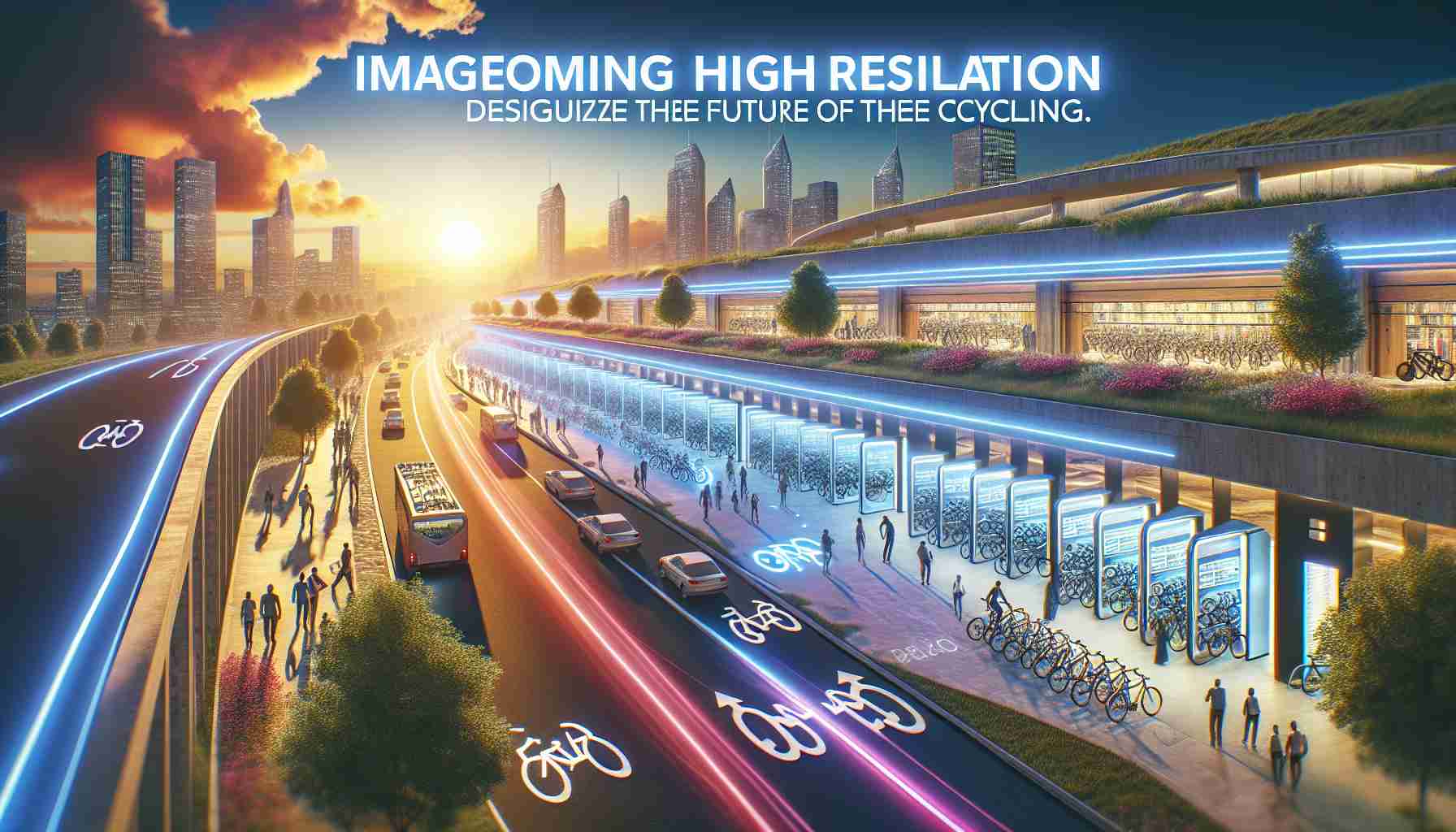Bike enthusiasts and tourists rejoice! The City Council has unveiled plans for new covered parking for bicycles and personal mobility vehicles in key areas of the city. These installations will be located at notable sites including Plaza de Santo Domingo de Guzmán, Plaza de España, Francisco Grandmontagne Street (Gamonal), and the Hospital del Rey.
The total investment for this project will reach €135,000, funded through European support under the Tourism Sustainability Program. The initiative aims to enhance accessibility to the city’s top tourist attractions via electric bicycles, promoting sustainable transport options. Each of the four selected locations will feature facilities capable of accommodating up to 10 bicycles, complete with shelters and interior surveillance for added security.
Innovatively, these parking spots will incorporate an automatic access system linked to a mobile app, allowing integration with the Bicibur bike-sharing scheme. Users can enjoy various optional services, including reservation capabilities, notifications for parking duration, and payment processing directly through a designated bank’s platform.
In addition to parking, the city is also working on acquiring 60 electric bicycles designed to shuttle tourists to the picturesque Castillo Park. This venture comes after the decision to forgo conventional shuttle services. With a budget of €495,495, the selected company will have a five-month deadline to implement these bicycles, further enriching the tourist experience.
New Infrastructure: A Step Towards Sustainable Urban Mobility
The implementation of covered bike parking and the introduction of electric bikes in the city signify more than just an infrastructure upgrade; they echo a broader societal shift towards sustainability and urban mobility. As cities worldwide contend with rising traffic congestion and pollution, embracing alternative transport modes not only fosters a cleaner environment but also promotes a culture of healthy living.
With urban areas facing increased demands for pedestrian-friendly solutions, the expansion of biking infrastructure aligns with global trends favoring reduced carbon footprints. According to the World Health Organization, cities that prioritize cycling can decrease air pollution by up to 40%, ultimately leading to improved public health outcomes.
Moreover, the financial backing from the European Tourism Sustainability Program underlines a pivotal transition in how tourism is perceived and managed. This investment is likely to enhance the local economy, attracting visitors who seek eco-conscious travel experiences. In destinations increasingly characterized by their commitment to sustainability, cities adopting these initiatives can become tourist hotspots.
Long-term, these projects also hint at potential shifts in urban planning strategies. As cities evaluate how to allocate space for both vehicles and cyclists, the focus may increasingly pivot towards integrated transport systems, where biking coexists with public transit to create cohesive, efficient travel networks. This trend signals a growing appreciation for the multimodal transport model, suggesting that the future of urban commuting may be fundamentally transformed by such initiatives, creating a legacy of sustainability and community health.
Revolutionizing Urban Mobility: New Bike Parking and Electric Shuttle Initiatives
As cities embrace more sustainable transportation solutions, the latest developments in urban mobility are creating exciting opportunities for bike enthusiasts and visitors alike. The recent announcement by the City Council regarding the establishment of new covered parking for bicycles and personal mobility vehicles is a significant leap toward promoting green transport options in urban settings.
Overview of the Bicycle Parking Initiative
The City Council’s ambitious project will see new parking facilities constructed at pivotal locations throughout the city, including:
– Plaza de Santo Domingo de Guzmán
– Plaza de España
– Francisco Grandmontagne Street (Gamonal)
– Hospital del Rey
With an investment of €135,000 funded through the European Tourism Sustainability Program, these initiatives not only aim to enhance the accessibility of key tourist attractions but also strive to foster a culture of sustainable commuting.
Key Features of the Bike Parking Facilities
Each parking spot will accommodate up to 10 bicycles, designed with several essential features:
– Covered Shelters: Protecting bikes from weather elements.
– Interior Surveillance: Ensuring safety and security for users’ vehicles.
– Automatic Access System: Integrating cutting-edge technology through a mobile app, users can access and manage their parking experience seamlessly.
Integration with Bicibur Bike-Sharing Scheme
An innovative aspect of this initiative is its connection to the Bicibur bike-sharing scheme. Users will benefit from optional features that enhance convenience:
– Reservation Capabilities: Pre-booking a parking spot to ensure availability.
– Duration Notifications: Keeping users informed about their parking time.
– Direct Payment Processing: Facilitating transactions via a partnered bank’s platform.
Enhancing Tourist Mobility with Electric Bicycles
In addition to the parking facilities, there’s an exciting plan to enhance mobility for visitors with the acquisition of 60 electric bicycles. These bikes are intended for shuttling tourists to the scenic Castillo Park, providing a green alternative to traditional shuttle services. With a budget of €495,495, the chosen company will implement this service within five months, ensuring that tourists can explore the city in an eco-friendly manner.
Pros and Cons of the Initiative
Pros:
– Promotes Sustainable Transport: Encourages the use of bicycles and electric transport.
– Increases Accessibility: Makes it easier for tourists to reach attractions.
– Enhances Security: Features like surveillance reduce theft concerns.
Cons:
– Initial Costs: A significant investment required may raise budget concerns.
– Dependence on Technology: Reliance on a mobile app could exclude less tech-savvy users.
– Maintenance: Ongoing upkeep costs must be managed effectively.
Future Trends in Urban Mobility
With a growing emphasis on sustainability, cities around the world are likely to see an increase in such initiatives. The integration of digital solutions, like mobile apps for transport management, is an emerging trend that enhances user experience. The development of electric transport networks may also foster more green spaces as urban areas adapt to accommodate alternative modes of transportation.
Conclusion
The City Council’s recent initiatives to introduce covered bicycle parking and electric shuttles are large steps toward a more sustainable urban environment. As cities continue to evolve, such projects not only benefit tourists but also serve to improve the quality of urban life for residents. For more details on sustainable transportation developments, visit European Sustainability Program.
